Archive
2021
KubaParis
And the Patterns of Oil


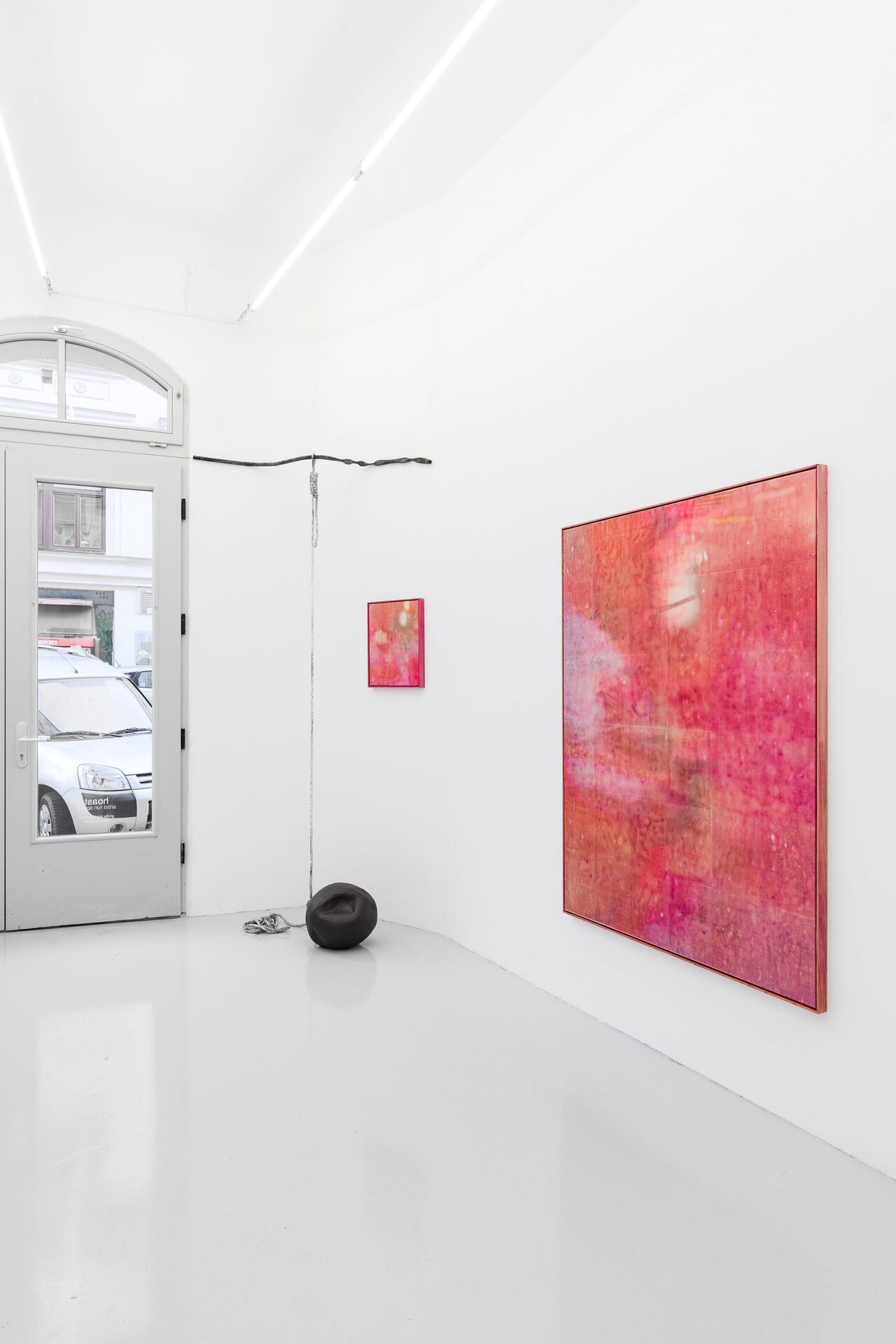
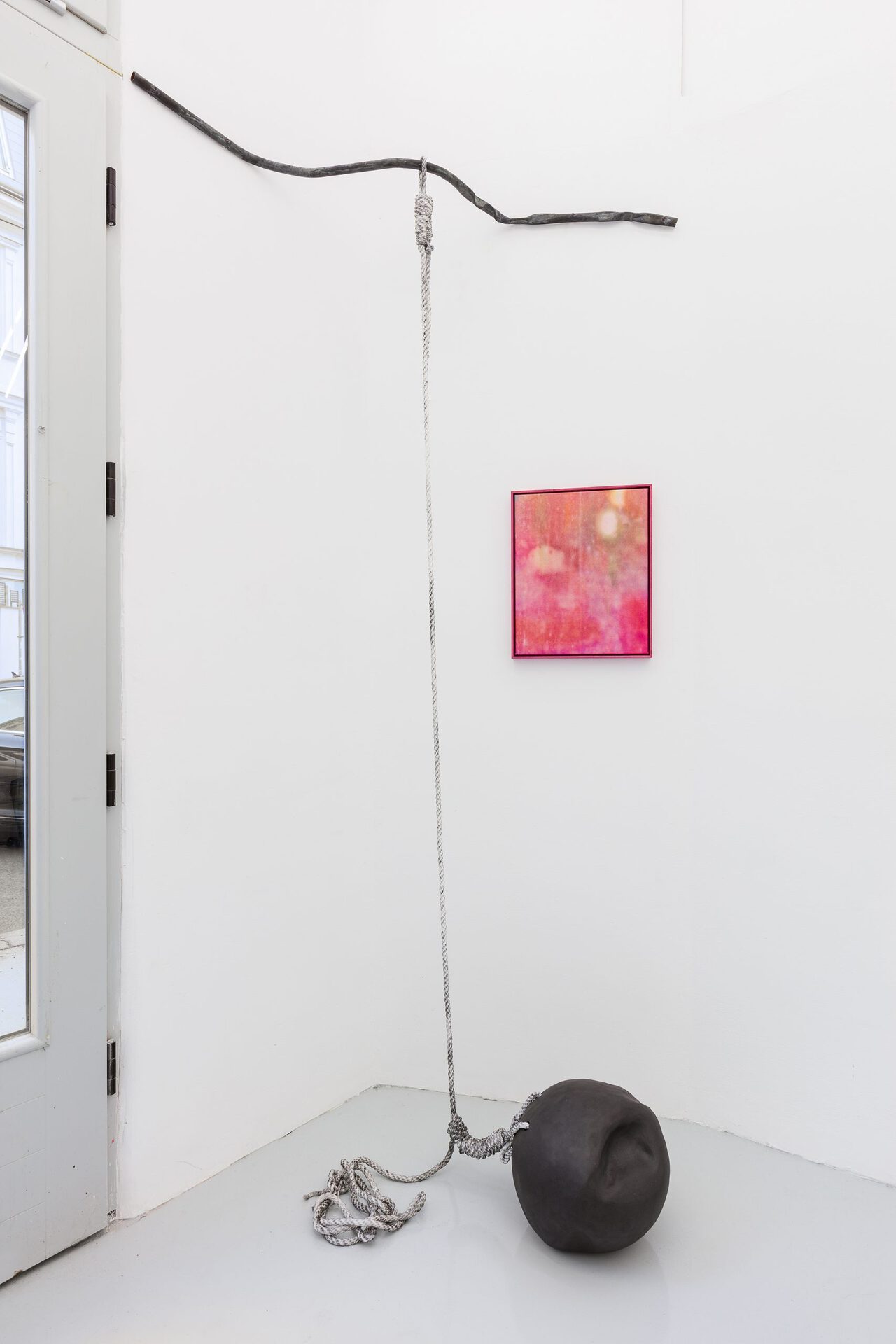
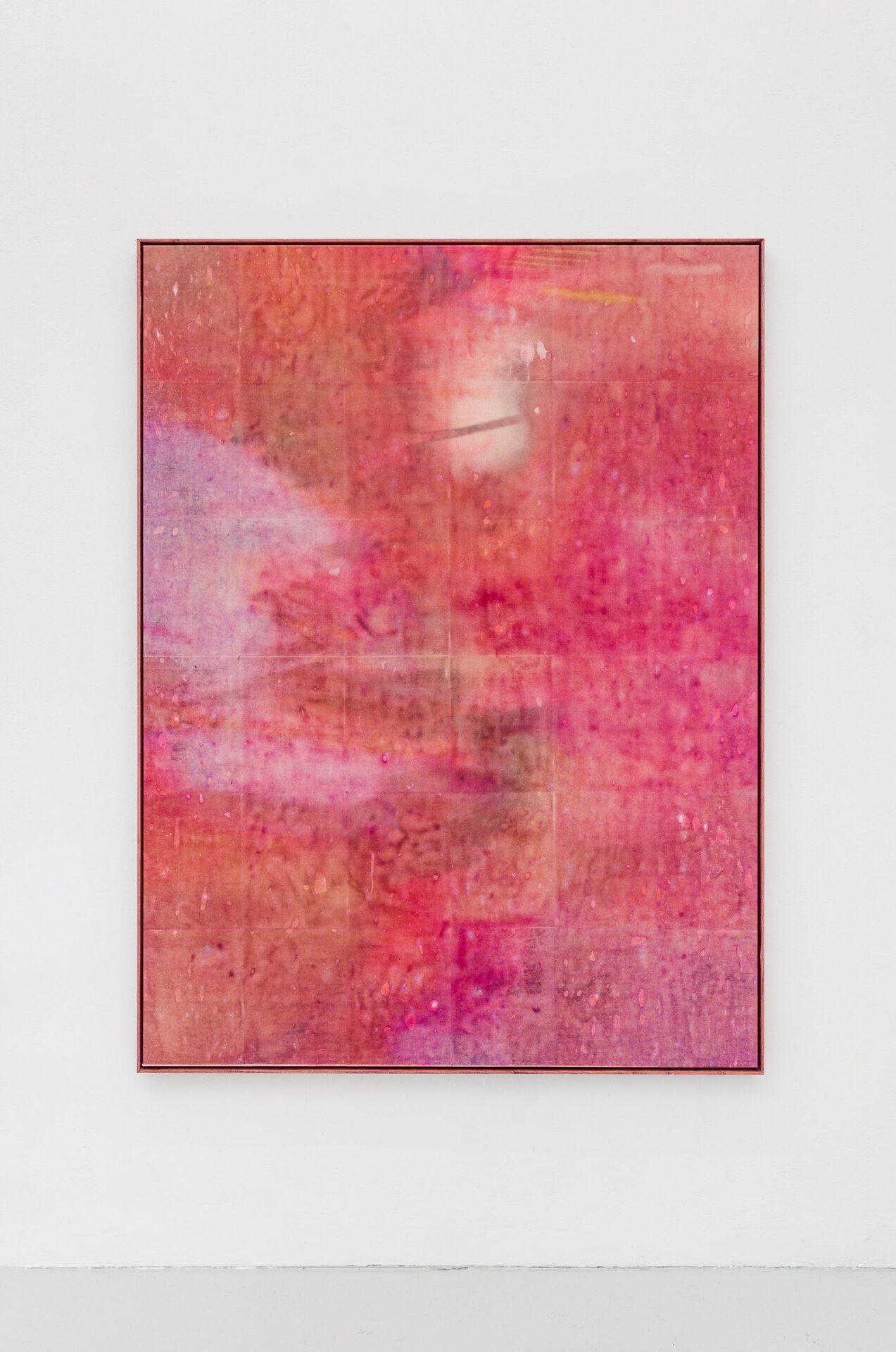
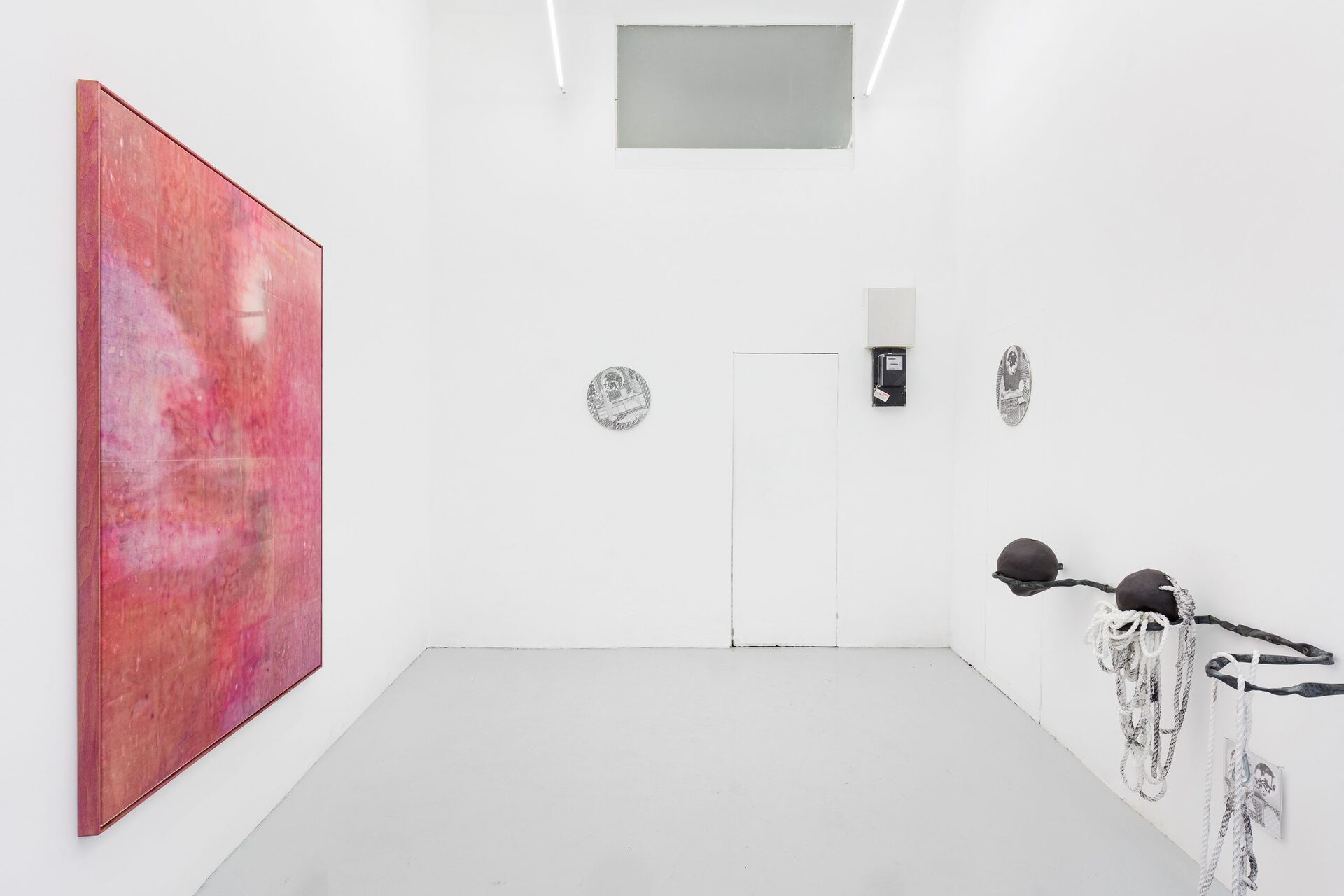
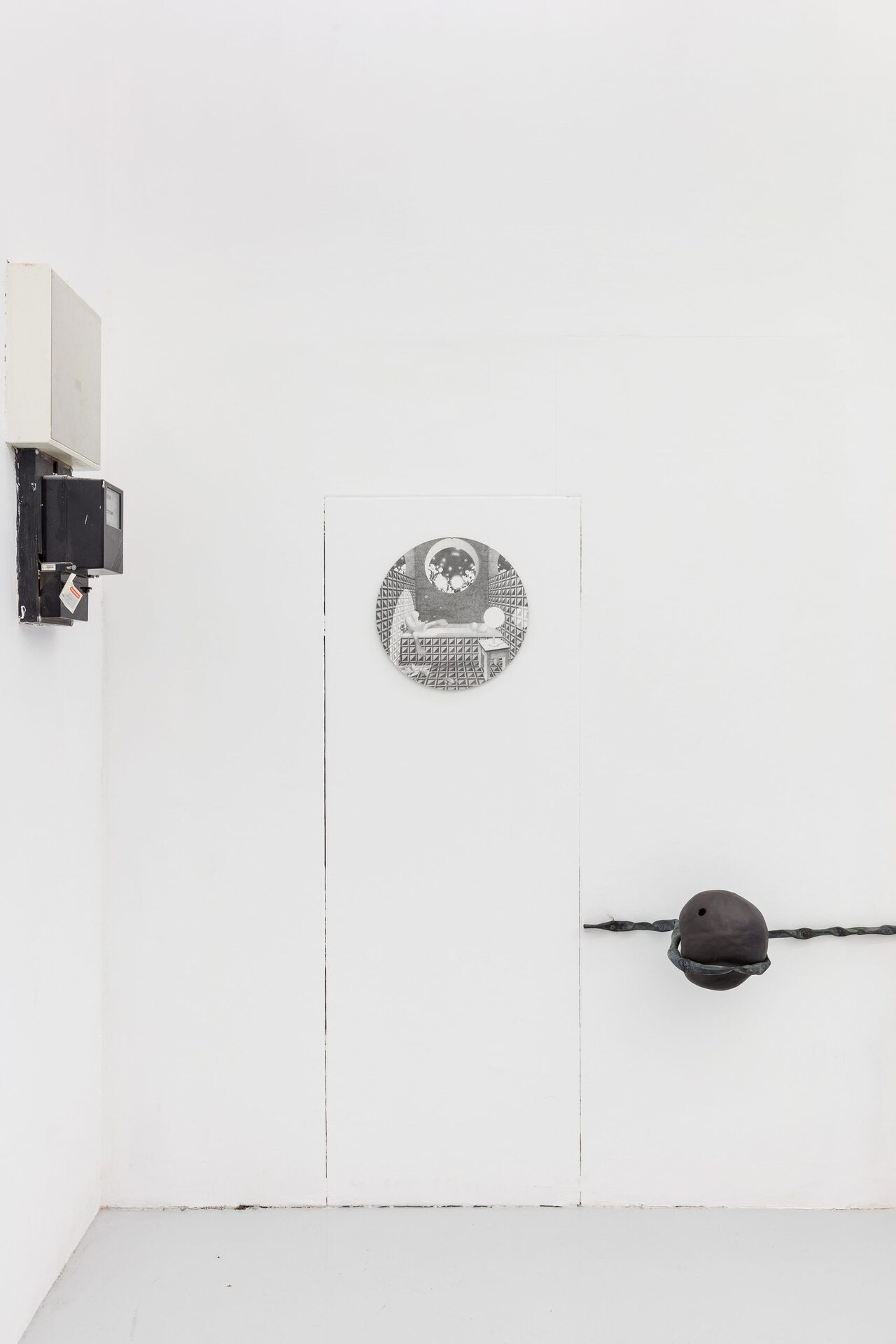
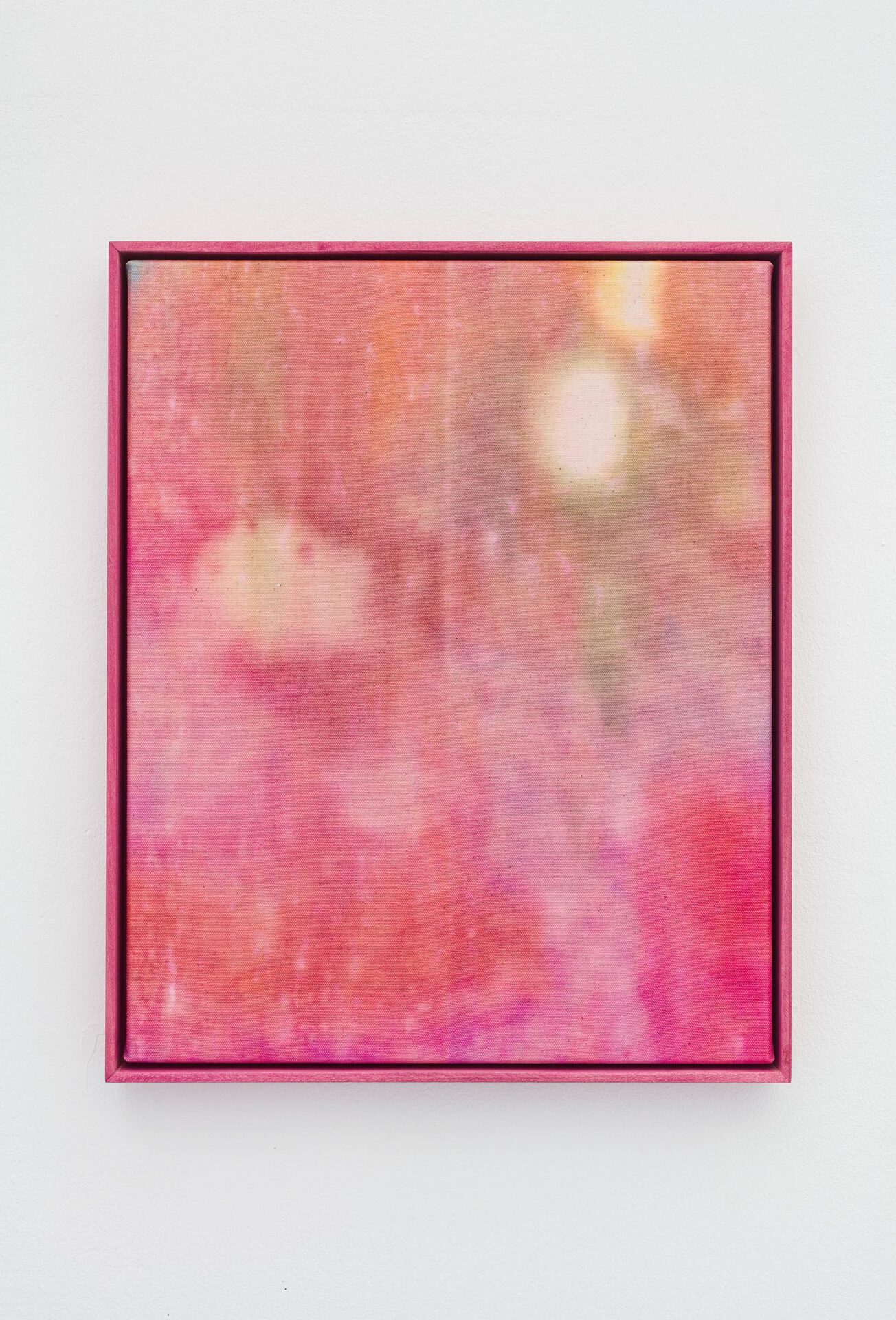

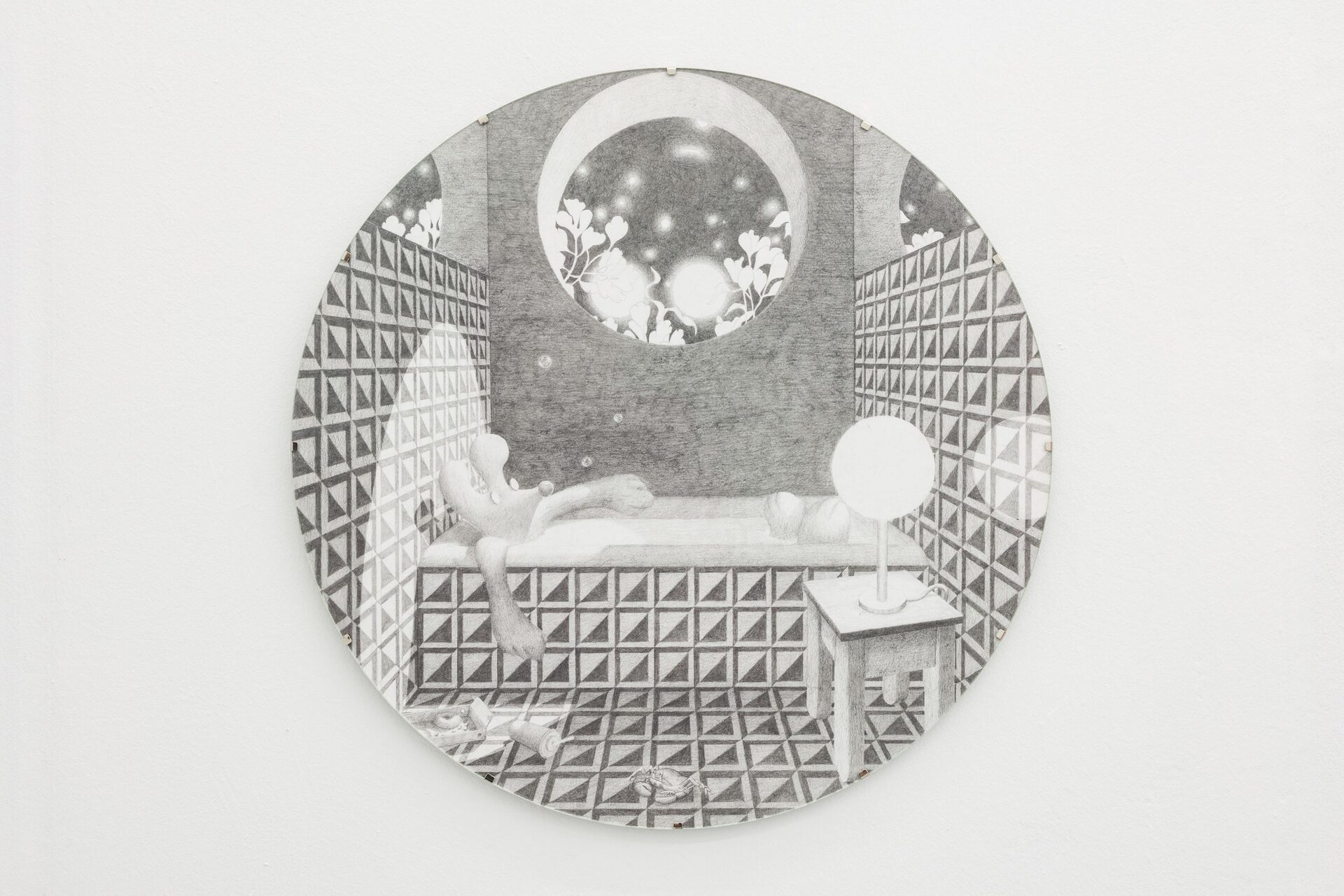
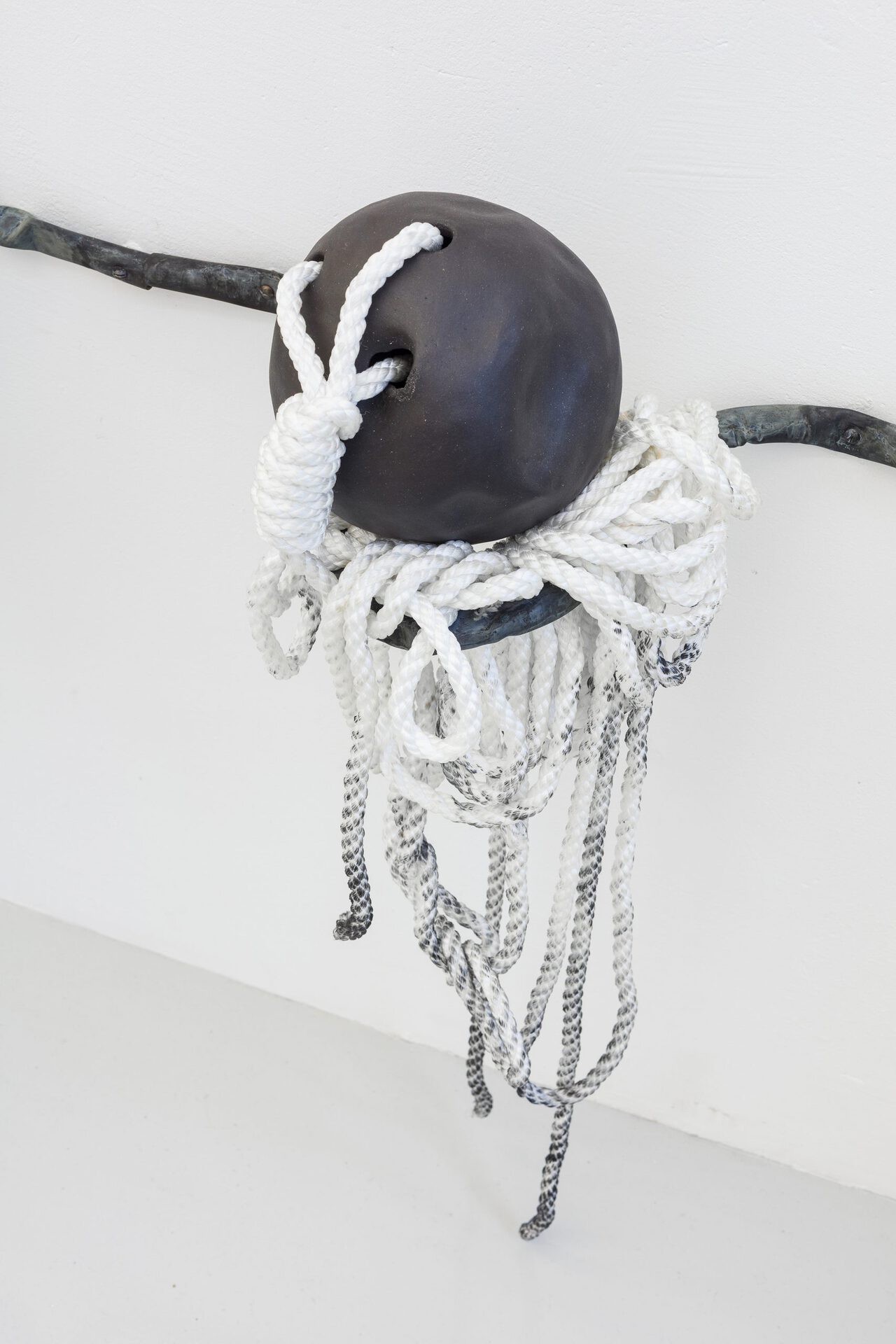
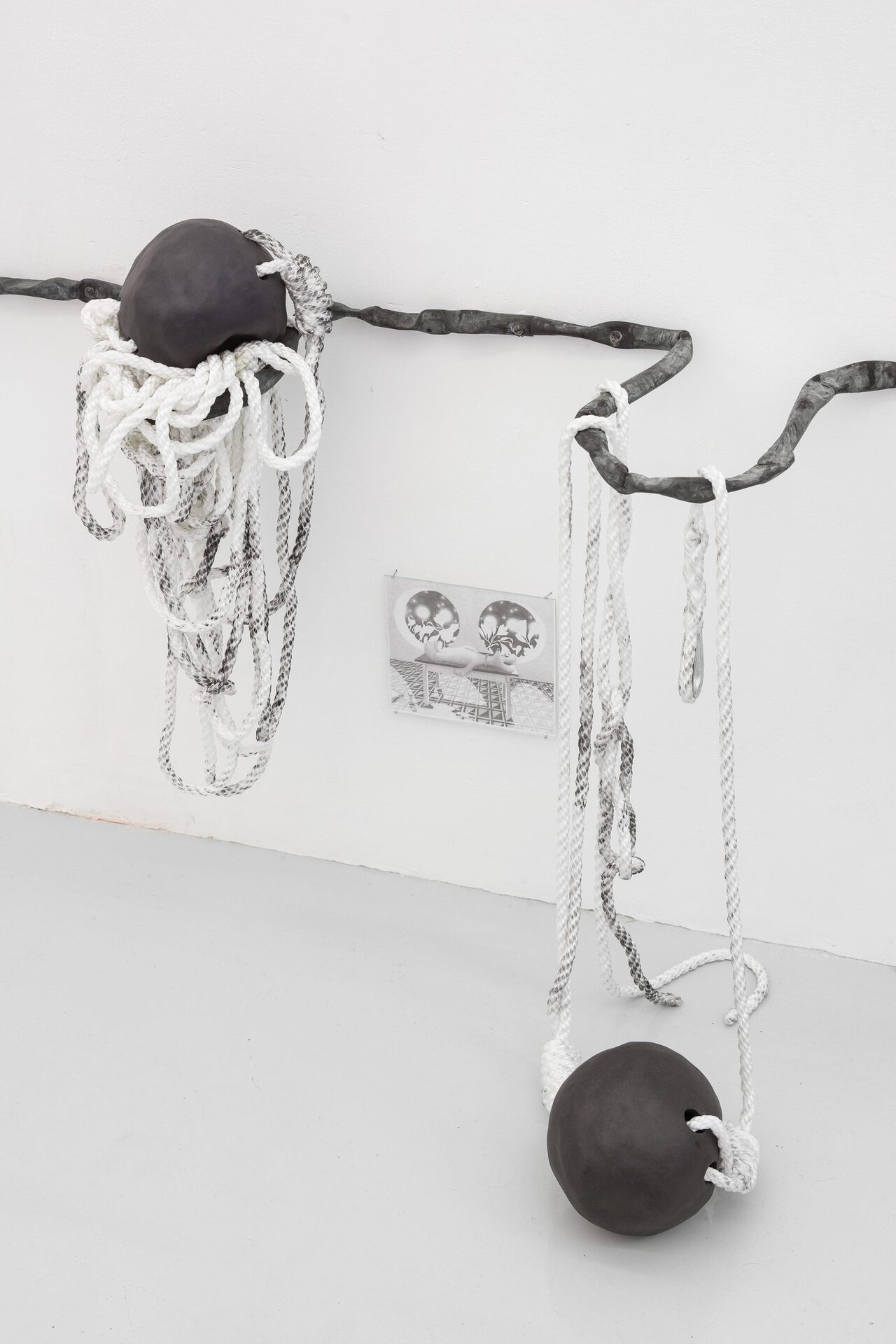
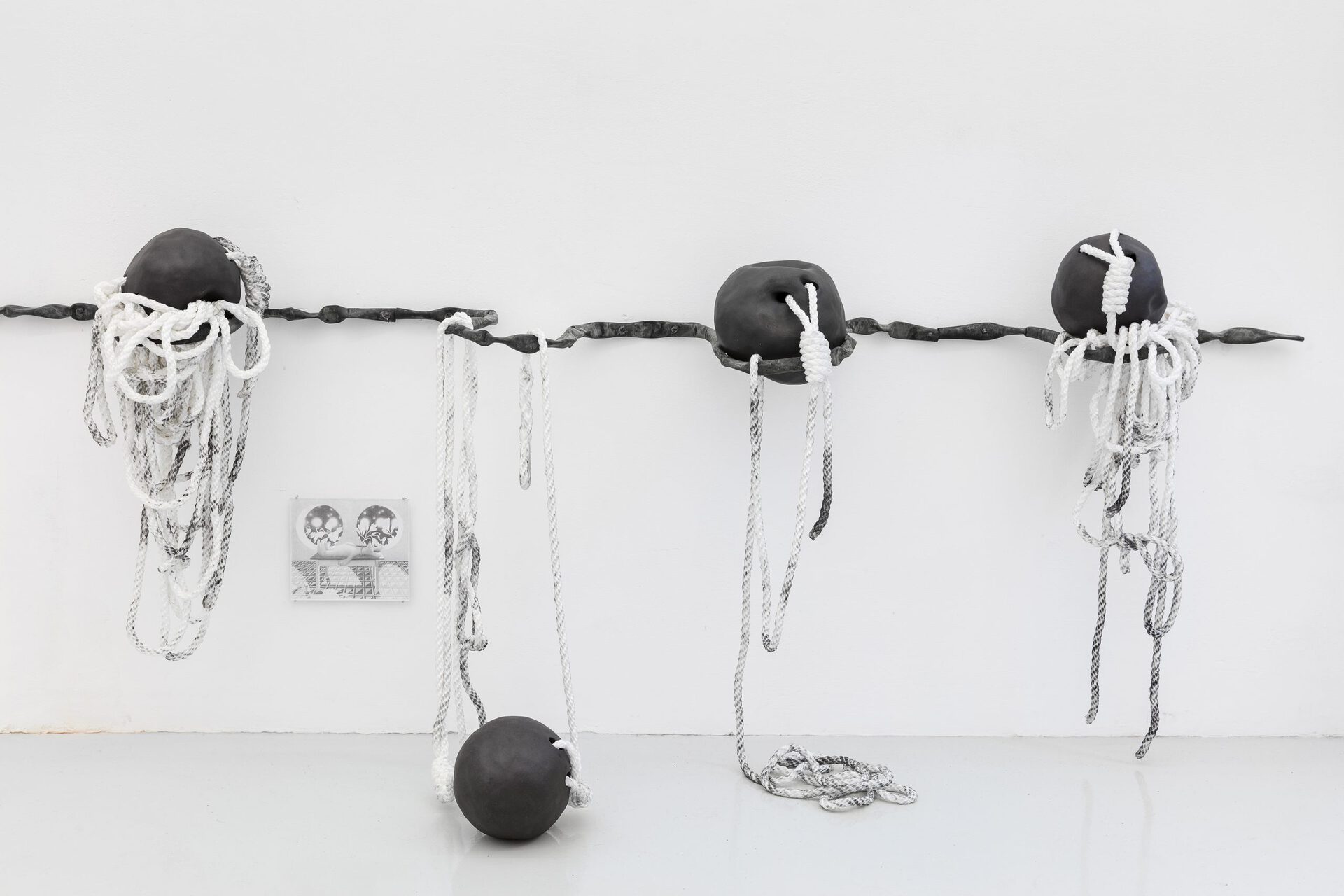

Location
Hoast artist run space ViennaDate
16.12 –08.01.2022Photography
Manuel Carreon LopezSubheadline
Artists: Lukas Matuschek, Wolfgang Matuschek, Marie ReichelText
And the Patterns of Oil
Ein kleiner Raum, drei künstlerische Positionen. In drei verschiedenen Medien, vor dem Hinter grund völlig unterschiedlicher Prozesse und Arbeitsweisen fordern die Werke Betrachter:innen auf, ihre Gemeinsamkeiten wie auch Kontraste auszuloten. Sowohl motivisch als auch in ihrer Formsprache lassen sich zwischen den skulpturalen, zeichnerischen und malerischen Arbei– ten Bezüge herstellen, die sich eher als feines, unregelmäßiges Netz entspinnen, denn einem zentralen roten Faden folgen.
Allen drei Positionen liegt dabei zu einem gewissen Grad das Prinzip der Aneignung zu grunde – im Bilderstrudel der Gegenwart scheint dies geradezu unausweichlich, ist Kunst doch gleichermaßen von ihrer Umgebung geprägt, als sie ihr Ausdruck verleiht. Die Referen zen mögen popkultureller oder auch altmeisterlicher Natur sein, doch bleiben Motive selten eindeutig lesbar. Sie werden stets weiterentwickelt – anstatt nur im postmodernen Sinn als ZitatVersatzstücke ineinander geschoben zu werden – und changieren oftmals zwischen mannigfaltigen Bedeutungsebenen. Dabei entwickelt jede:r Betrachter:in naturgemäß eigene Assoziationen, so beginnt mein Kopfkino buchstäblich im Film:
Im Glanz der Katastrophe sonnt sich Kirsten Dunst als Justine in Lars von Triers Melancholia unter dem nächtlichen Mondlicht im Wissen um einen heranrasenden, zerstörerischen Planeten. Die weiße Kugel taucht in den untitled Graphitzeichnungen immer wieder auf, nicht zuletzt in ihrem Format selbst, und spendet klares, kühles Licht. Als Mond ebenso wie als modernistische Lampe wabert sie durch die minutiös gezeichneten Bildwelten, die mal un belebt sind, mal von einer tierähnlichen Figur bewohnt werden, die in ihrer Comicartigkeit der sublimen geometrischen Badezimmerkulisse einen Loriot’schen Twist verleiht.
Das Motiv der Kugel, des Balls, ist auch Bezugspunkt der Shackle Balls, die zeichnerische Feinheit wird jedoch abgelöst vom plastischen Formungsprozess, der durch einen ähnlich minutiösen Politurvorgang mithilfe eines Teelöffels beschlossen wird. Wie verbeulte Bowling kugeln oder alte Sportbälle wirken die Skulpturen, denen durch die Aufknüpfung an Seilen ein morbides Moment eingehaucht wird, das ihre cartooneske Ausgangsform von ball and chain zur Personifikation umdeutet. Sie thronen mal hoch oben unter der Decke oder werden, einem Vogel im Nest gleich, am Boden positioniert.
Dass auch den nahezu abstrakten malerischen Werken motivische Vorlagen von Fotografien zugrunde liegen, mag ebenso überraschen, wie der gefinkelte Arbeitsprozess, der vollendeten Bildern wie i*0273 (Future Garden I) vorangeht. Es sind zufällige, oftmals verwischte digitale Fotos, die soziale Momente einfangen und mittels handelsüblichen Tintenstrahldrucken und Kleister auf Leinwand übertragen werden, wo sich die Farbe verselbstständigt. Wie flüchtige Erinnerungen ins Gedächtnis schreiben sich die Motive in die Kleisterschicht ein – lesbar bleiben sie nur mehr für den Künstler.
Sie vollziehen dabei den umgekehrten Prozess der Shackle Balls, deren glattpolierte Oberfläche sich jeglichen Spuren des Herstellungsprozesses verweigert, wo nur die Handabdrücke der Künstlerin als persönliche Einschreibung bleiben und als Dellen und Ausbeulungen nicht nur von Abnutzung zeugen, sondern neue, anthropomorphe Formen evozieren. In der Entfremdung der digitalen Bilder verschwimmen solche Assoziationen, das Auge wird mit einer Ungewiss heit konfrontiert, die sich an manchen brüchigen, fast surrealistisch anmutenden Stellen auch in den gezeichneten untitleds widerspiegelt, den streng durchkomponierten Kulissen zum Trotz.
Gemein ist den drei Künstler:innen dabei neben ihrem ähnlich geprägten Blick auf ihre Umwelt die handwerkliche Präzision, die sich sowohl in den titelgebenden, spezifischen Oberflächen behandlungen als auch in klaren Formen ausdrückt – eingebettet in eine digitale Bilderwelt, von der sie ebenso zehren wie von analogem Erleben. Das mag kitschig klingen, wären da nicht diese zarten Brechungen: ironische Momente und eine gewisse lakonische Leichtigkeit im Umgang mit jenen allgegenwärtigen Bildern.
And the Patterns of Oil
A small room, three artistic positions, three different medias. Against the background of completely different processes and modes of working the artworks challenge the viewer to explore their similarities as well as their contrasts. In terms of both motif and formal language parallels can be drawn between the sculptures, drawings, and paintings, unfolding like a fine, amorphous web rather than following a central theme.
All three positions are based to a certain degree on the principle of appropriation—in the contemporary maelstrom of images, this seems almost impossible to avoid, since art is influenced by its surroundings to the same extent that it gives expression to them. The references may be of a pop-cultural or even old-masterly nature, but motifs rarely remain clearly legible. They are constantly being developed further—going beyond the simple interlocking of quotations of the postmodern era—and often oscillate between multiple levels of meaning. In the process, each viewer naturally generates their own associations; my imagination starts racing towards the movies:
In the glory of catastrophe, Kirsten Dunst as Justine in Lars von Trier’s Melancholia basks under the nocturnal moonlight in the knowledge of an onrushing, destructive planet. The white ball recurs throughout the untitled graphite drawings, not least in their format itself, providing clear, cool light. As a moon as well as a modernist lamp, it wafts through the precisely drawn pictorial worlds, which are sometimes inanimate, sometimes inhabited by an creature-like figure whose comic-like quality lends a Loriot-like twist to the sublime geometric bathroom backdrop.
The motif of the sphere, the ball, is also the point of reference for Shackle Balls, but the graphic delicacy is replaced by the plastic shaping process, which is concluded by a similarly meticulous polishing process with the help of a teaspoon. The sculptures look like dented bowling balls or old sports balls, with a morbid moment added by their hanging from ropes, reinterpreting their cartoonesque initial form of ball and chain into personification. Some-times they are enthroned high up under the ceiling or positioned on the floor, like a bird in a nest.
The fact that the almost abstract painterly works are also based on motifs from photographs may come as much as a surprise as the sophisticated working process that precedes completed paintings such as i*0273 (Future Garden I). They are random, often blurred digital photographs that capture social moments and are transferred to canvas using commercial inkjet prints and paste in which the color takes on a life of its own. Like fleeting memories, the motifs inscribe themselves in the paste layer—they remain legible only for the artist.
In doing so, they perform the reverse process of the Shackle Balls, whose smoothly polished surface negates alltraces of the manufacturing process. Only the artist’s handprints remain as a personal inscription and—as dents and bulges—testify not only to wear and tear, but evoke new, anthropomorphic forms. In the estrangement of the digital images, such associations become blurred. The eye is confronted with an uncertainty that is reflected in the drawn untitleds in some fragile, almost surrealistic places, despite their strictly composed scenes.
In addition to their similarly shaped view of their environment, the three artists have in com- mon the precision of their craftsmanship, expressed both in the specific surface treatments that inspired the exhibition’s title and in clear forms––embedded in a digital world of images from which they draw just as much as from analog experience. This would sound corny, were it not for delicate refractions: hints of irony and a certain laconic lightness in dealing with those omnipresent images.
Kathrin Heinrich